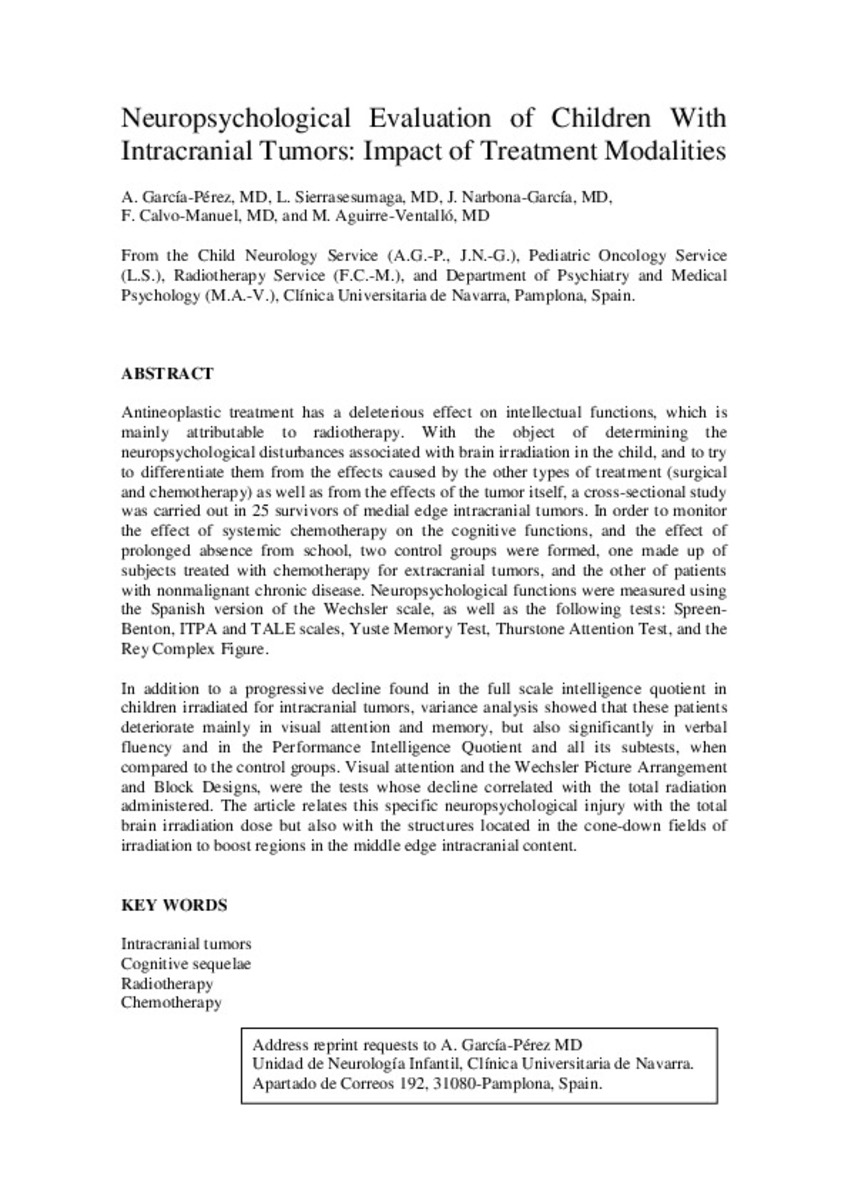Neuropsychological evaluation of children with intracranial tumors: impact of treatment modalities
Keywords:
Brain Neoplasms/drug therapy
Cross-Sectional Studies
Dose-Response Relationship, Radiation
Publisher:
Wiley-Blackwell
Citation:
García-Pérez A, Sierrasesumaga L, Narbona-García J, Calvo-Manuel F, Aguirre-Ventalló M. Neuropsychological evaluation of children with intracranial tumors: impact of treatment modalities. Med Pediatr Oncol. 1994;23(2):116-23.
Statistics and impact
0 citas en

0 citas en

Items in Dadun are protected by copyright, with all rights reserved, unless otherwise indicated.







